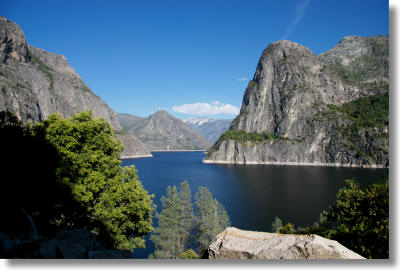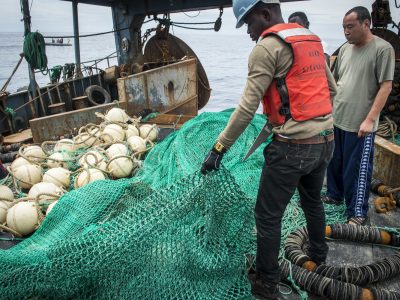Biodiversity & Species
(Still More) Bad News on the Doorstep
New Reports Document Accelerating Wildlife Extinctions, Global Deforestation Trends
While public attention in recent weeks and months has understandably focused on the COVID-19 pandemic and the racial justice shockwaves triggered by George Floyd’s tragic death, another disaster continues apace. This week the New York Times published two alarming stories documenting the accelerating decline of our global environment. The first, entitled “Extinctions Are Accelerating, Threatening …
Continue reading “(Still More) Bad News on the Doorstep”
CONTINUE READINGTop 10 Worst Environmental Decisions in California’s History
Ranking the lost landscapes and environmental features
California has a paradoxical history with its environment. On one hand, the state boasts incredible natural beauty, along with a government that is an internationally recognized leader for strong environmental policies. But the state’s residents have also caused severe environmental destruction, particularly in the late nineteenth century — some of which helped spur the mobilization …
Continue reading “Top 10 Worst Environmental Decisions in California’s History”
CONTINUE READINGDeferred Planetary Maintenance
It’s easy to put off long-term problems when there’s a crisis. Much too easy, actually.
Long-term problems get short shrift in a crisis. That’s true of infrastructure repair; it’s also true of climate change. Like deferred maintenance, climate change just gets bigger the longer it’s put off. I often see the fruits of deferred maintenance on the Berkeley campus. Building conditions are a huge problem at Berkeley. Whenever there’s a …
Continue reading “Deferred Planetary Maintenance”
CONTINUE READINGHow the Coronavirus is (Not) Like Climate Change
The two have some informative parallels, although some observers draw the wrong conclusions
The coronavirus dominates the news and much of our minds. Here at Legal Planet, we have written about the coronavirus and presidential powers, disaster declarations, fossil fuel production, decision-making under uncertainty, inequality, and cities. I will join the party and consider what are the parallels and differences between the coronavirus crisis and anthropogenic climate change, …
Continue reading “How the Coronavirus is (Not) Like Climate Change”
CONTINUE READINGClimate Change Threatens Tropical Fish Stocks. How Should Countries Respond?
As climate change warms the world’s oceans, marine scientists have paid special attention to how this will influence the movement of fish. Recent articles have shown that fish stocks are migrating toward colder waters in the poles. In a piece published yesterday in Nature Sustainability, a group of economists, marine scientists, and I examined for the first …
Continue reading “Climate Change Threatens Tropical Fish Stocks. How Should Countries Respond?”
CONTINUE READINGYes, there’s a difference between “endangered” and “threatened” species
Federal district court tells FWS its discretion to choose the less protected designation has limits
A recent ruling from the federal District Court in DC provides an important lesson that the US Fish and Wildlife Service would do well to heed: the agency has limited discretion to find that species are threatened rather than endangered. Under the Endangered Species Act (ESA), species can be listed as either endangered (“in danger …
Continue reading “Yes, there’s a difference between “endangered” and “threatened” species”
CONTINUE READINGAnalyzing the revisions to the ESA regulations (Part V)
Overall, the revised regulations increase agency discretion, particularly to avoid consideration of climate change
This is the fifth post in a series. The first post is available here. The second post is available here. The third post is available here. The fourth post is available here. Overall, the biggest takeaways from the proposed regulations are that (a) they are intended to substantially increase the discretion the agencies have in …
Continue reading “Analyzing the revisions to the ESA regulations (Part V)”
CONTINUE READINGAnalyzing the revised ESA regulations (Part IV)
The most important revisions to the regulations affect how federal agencies avoid harm to endangered species under Section 7 of the ESA
This is the fourth post in a series. The first post is available here. The second post is available here. The third post is available here. The final regulations I am discussing in this post are available here. These are by far the most significant, but also the most complicated changes to the regulations. Section …
Continue reading “Analyzing the revised ESA regulations (Part IV)”
CONTINUE READINGAnalyzing the revised ESA regulations (Part III)
Regulations would make it easier for agency to avoid protections for threatened species
This is the third post in a series. For the first post, see here. For the second, post, see here. The regulations I am analyzing in this post are available here. Section 9 of the ESA prohibits any person from “taking” a listed species – take is defined in the statute rather broadly, to include …
Continue reading “Analyzing the revised ESA regulations (Part III)”
CONTINUE READINGAnalyzing the revised ESA regulations (Part II)
Regulations would make it harder to protect species and habitat because of climate change
This is the second in a series of posts. For the first post, see here. The regulations I am analyzing in this post are available here. The ESA has a system by which it determines what species warrant protection under the Act, and therefore should be listed as either endangered or threatened. In theory at …
Continue reading “Analyzing the revised ESA regulations (Part II)”
CONTINUE READING







